Under standard conditions, the electrostatic field-effect is negligible in conventional metals and was expected to be completely ineffective also in superconducting metals. This common belief was recently put under question by a family of experiments that displayed full gate-voltage-induced suppression of critical current in superconducting all-metallic gated nanotransistors.
A new research carried out at the SQEL add an another piece to this intriguing puzzle showing the control of the supercurrent in fully suspended superconducting nanobridges.
The research, published on ACS Nano by M. Rocci and co-authors, allows to take a different perspective compared to previous studies and promise a better understanding of the field effect in superconducting metals, ruling out some of the hypothesis as possible mechanisms driving for the observed phenomenology.
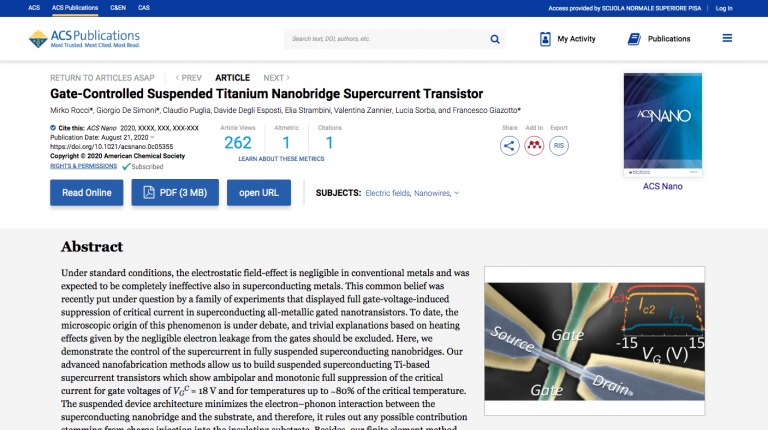 “Gate-Controlled Suspended Titanium Nanobridge Supercurrent Transistor” published on ACS Nano
“Gate-Controlled Suspended Titanium Nanobridge Supercurrent Transistor” published on ACS Nano 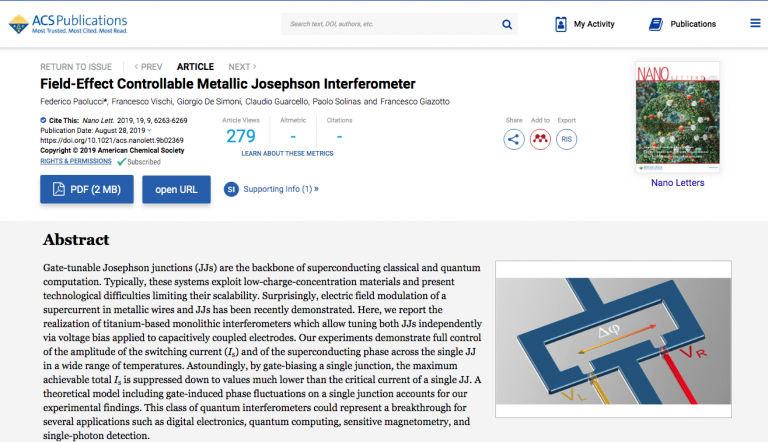 “Field-Effect Controllable Metallic Josephson Interferometer” published on Nano Letters
“Field-Effect Controllable Metallic Josephson Interferometer” published on Nano Letters 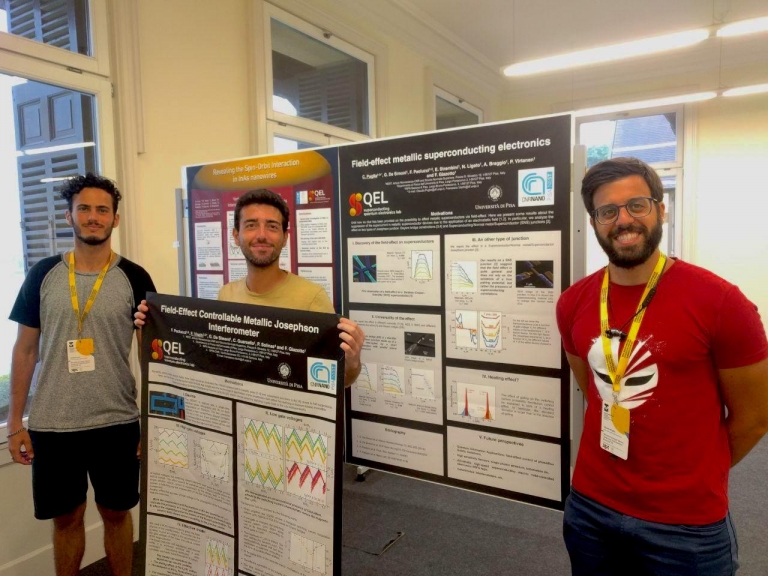 SQEL students at NanoQI’19
SQEL students at NanoQI’19 
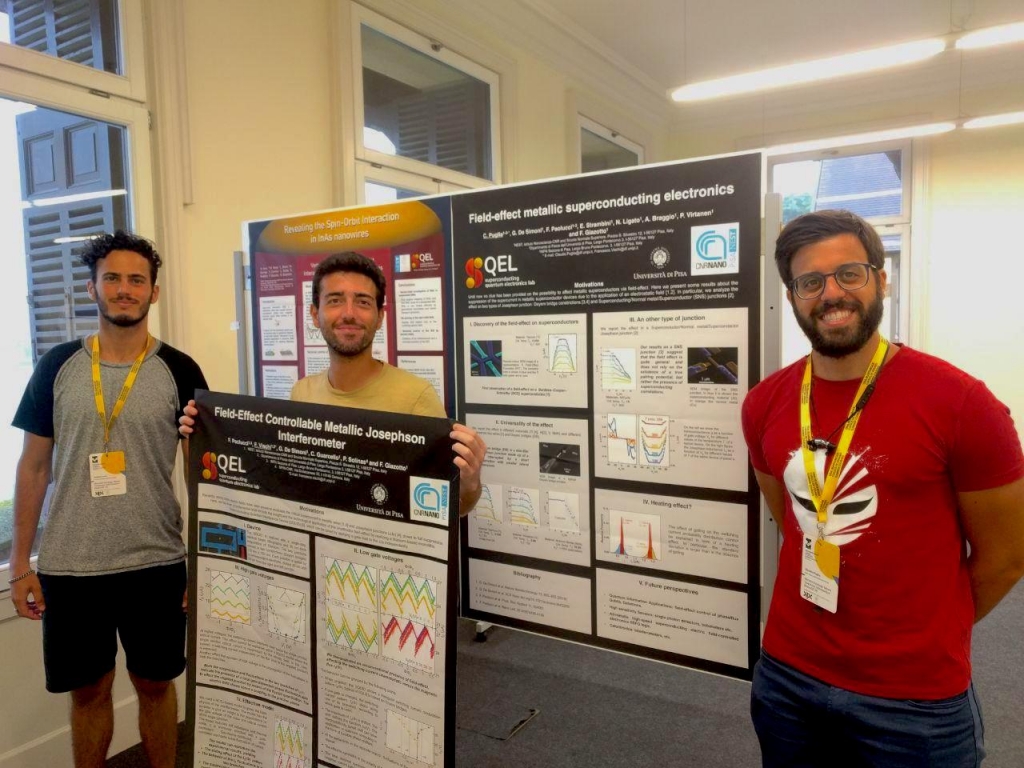
 “Josephson Field-Effect Transistors Based on All-Metallic Al/Cu/Al Proximity Nanojunctions” published on ACS Nano
“Josephson Field-Effect Transistors Based on All-Metallic Al/Cu/Al Proximity Nanojunctions” published on ACS Nano